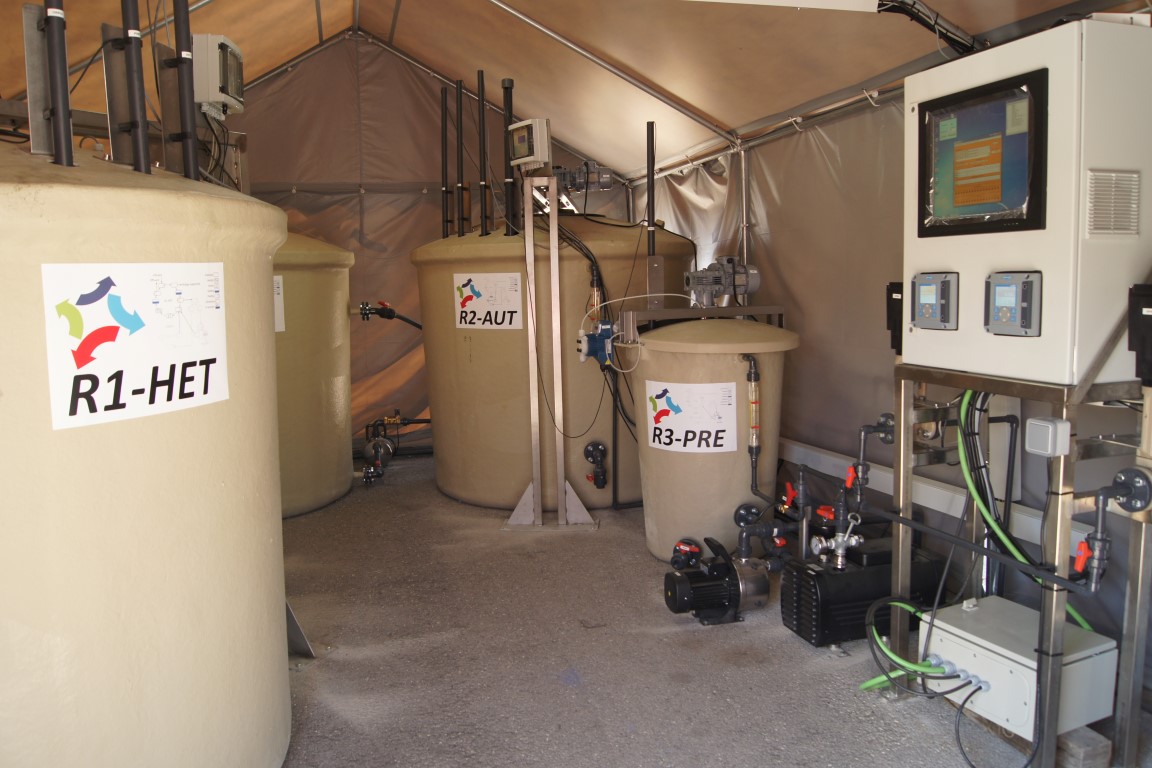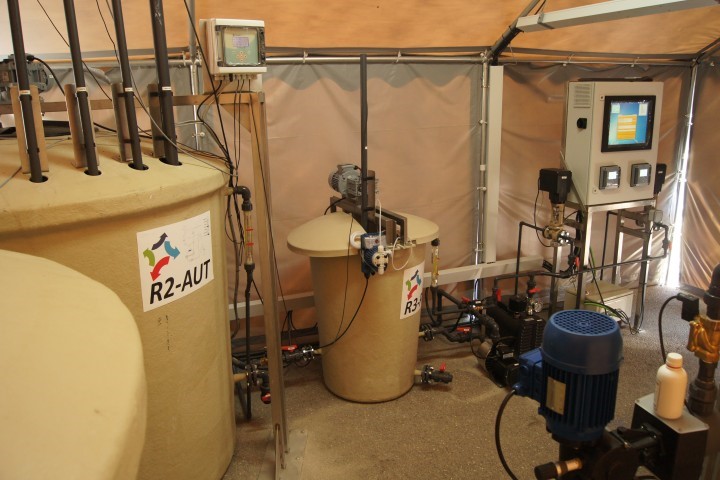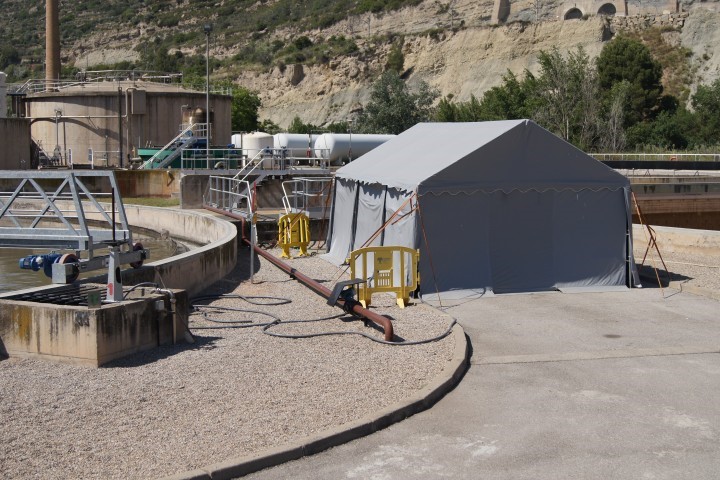|
SMARTech n. |
Integrated municipal WWTP |
Key enabling process(es) |
SMART-product(s) |
|
SMARTech2b |
Manresa (Spain) |
Mainstream SCEPPHAS |
P-rich sludge, PHA |
The municipal WWTP of Manresa (Barcelona, Spain) receives an average flow rate of 27,000 m3/ day. It consists of a pre-treatment (gross and grit removal), primary treatment with a clarifier and a secondary biological stage. There are two main treatment lines in the secondary stage; each one has three anoxic reactors (1,460 m3) and one aerobic reactor (6,782 m3). It uses a Modified Ludzack-Ettinger Process (MLE) for COD and N removal with conventional nitrification/denitrification. Air is bubbled from the bottom of the aerobic tanks with membrane diffusers. An internal recycle pipe connects the aerobic zone to the anoxic one to bring the nitrate to be denitrified in the anoxic zone. At the end of the secondary stage, two settlers separate the biomass from the treated effluent. Settled biomass returns to the entrance of the anoxic reactor by an Archimedes screw. Phosphorus is removed by chemical precipitation with FeCl3. The effluent, after leaving the secondary settler, can be chlorinated and it is disposed to the environment at the Cardener River, which is considered a sensitive area.
SMARTech2b is the key to enable secondary mainstream energy-efficient resource recovery. It applies the mainstream SCEPPHAR (Short - Cut Enhanced Phosphorus and PHA Recovery) and consists of two SBR; one for heterotrophic bacterial growth operated under anaerobic/anoxic/aerobic sequence (HET-SBR), and another SBR for autotrophic nitrifiers growth (AUT-SBR), an interchange vessel and a chemical system for P-recovery as struvite. The integrated system accomplishes enhanced N-removal and P-recovery in municipal WWTP. PHA was recovered from the anaerobic purge of the SBR. The liquid volume of each SBR vessel is 2500 L, for the interchange vessel is the same as for the SBR and for the struvite precipitation vessel is 400 L.
The pilot-scale system has a reaction volume of 6-8 m3 and was installed at the Manresa municipal WWTP (Spain) to treat about 10 m3/d of sewage in 3 cycles of 8 hours per day. The main objectives of the pilot- plant implemented as a mainstream treatment for municipal wastewater were to: (1) treat 10m3/d of wastewater after primary treatment; (2) achieve an effluent with P < 1 mg/L and TN <10 mg/L without addition of external carbon source nor FeCl3 for P precipitation; (3) remove N via nitrite with a removal up to 90%; (4) recover around 50% of P in the influent as struvite; (5) produce a waste sludge with PHA content up to 10%.
Highlights and main results
- First implementation at demo scale and under relevant conditions of the integration of i) shortcut nitrification, ii) P recovery and iii) production of sludge with increased PHA%
- Successful long-term operation of the mainstream SCEPPHAR at demo scale (7.8 m3)
- Removal efficiencies: TN: 86%, P: 93%, CODT: 79%
- Including nitrite shortcut did not affect C, N and P removal
- Average 45% of influent P was recovered as struvite (up to 63%)
- The highest PHA percentage in the biomass was 9.2%
Impact of the system
- EBPR can be combined with a high P recovery as struvite in a mainstream configuration
- Sludge generated contains a higher amount of PHA than conventional sludge
- Stable nitrogen via nitrite shortcut, without increasing N2O emissions (GHG)
- High COD, N and P removal are stably obtained if enough rbCOD is available in the wastewater






